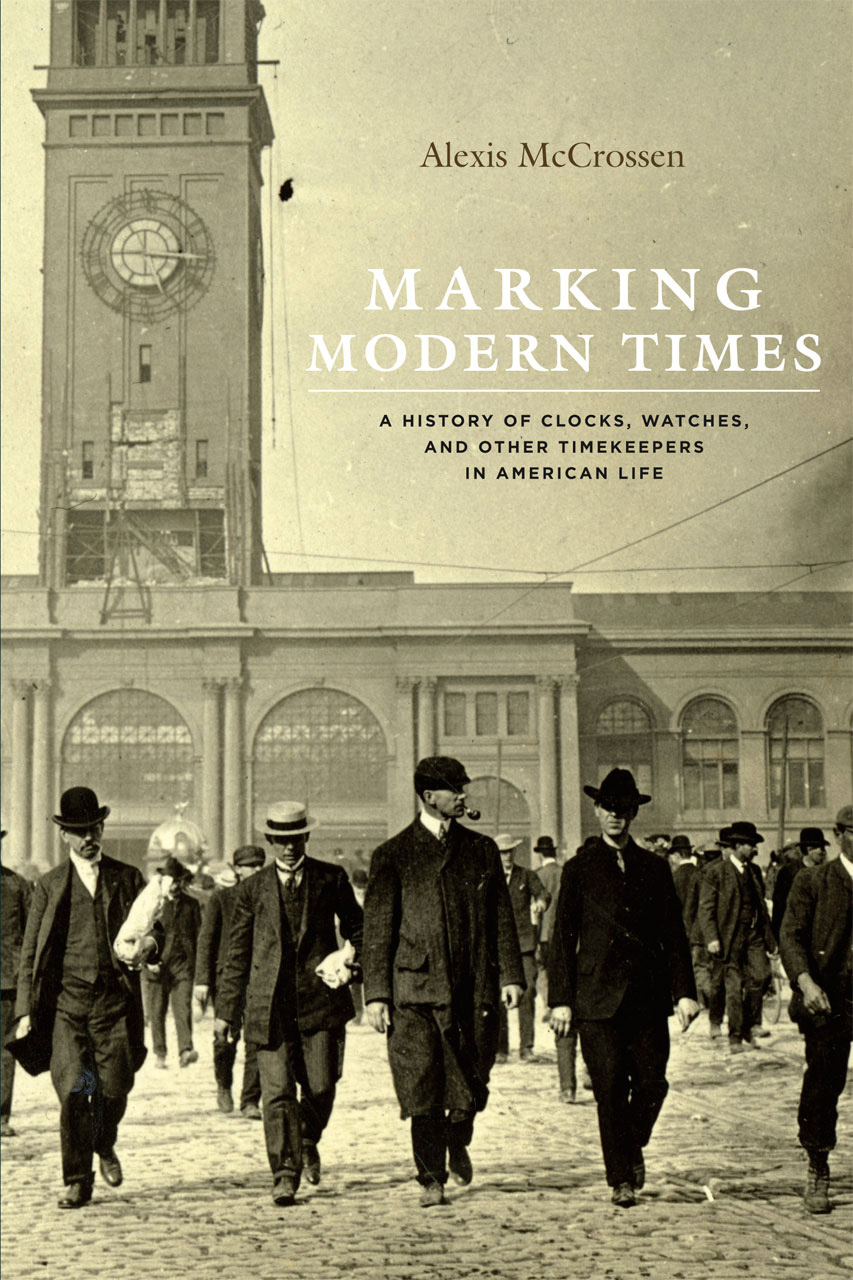A brief history of knowing what time it is
History Professor Alexis McCrossen talks about the history of time, particularly the wristwatch in light of the new watch from Apple.
From The Atlantic:
A Brief History of the Wristwatch
By Uri Friedman
Alexis McCrossen, a history professor at Southern Methodist University and the author of Marking Modern Times: A History of Clocks, Watches, and Other Timekeepers in American Life, traces the story of the wristwatch back to the spread of “portable clocks,” or large pocket watches, in the 1700s, when “people want to start carrying the time around with them; they’re not content just to look at the public clocks in whatever village or town they might end up in.”
These watches were made progressively smaller and better-secured with features like chains or straps, and were often seen primarily not as a timepiece but as a reliable vehicle for investing personal savings. “If you look at pawn records from the 19th century in the U.S., about 40 to 50 percent of all pawned items were pocket watches,” McCrossen told me.
Innovations in the mid- to late-19th century — including the machine manufacturing of watches, the advent of the railroad, factories, and electricity, and the standardization of time zones in Europe and the United States — increased demand around the world for watches and the “imperatives to own and control time” rather than obey it, she said. . .

". . . By the 1920s, you have aviation, you have automobiles. The pocket watch was really intimately associated with the railroad. And so it seems very antiquated, it’s like something your dad wore. A modern man’s going to wear a wristwatch.” By the Great Depression, wristwatch production had eclipsed pocket-watch production; by World War II, the pocket watch was obsolete. The Great War, as one U.S. paper put it in 1919, had “made the world safe for men who wear wrist-watches.”
In 2013, McCrossen wrote that, with the introduction of smartwatches, the “pocket-to-wrist cycle may repeat itself.” In recent years, she argued, the adoption of smartphones has made wristwatches less popular, particularly for young people who use their smartphones as, among other things, modern-day pocket watches. (Thus far, sales of wristwatches, especially luxury wristwatches, have actually remained strong during the smartphone era, though today they may be more associated with fashion than timekeeping.)
But McCrossen’s not convinced that Apple and others will be able to restore the Age of the Wrist — in part because of the privacy and security that the pocket offers for treasured phones, and in part because “time is embedded everywhere” these days, from car dashboards to coffeemakers to iPhone screens.
“Maybe we’re so deeply saturated with the imperatives of clock time that we want to put it away,” she said. “Maybe we don’t want it on our wrist anymore. Maybe we don’t need it.”